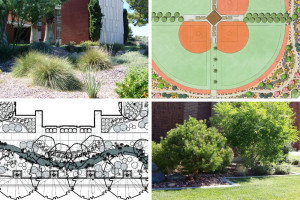The Landscape Design Statements
Table of ContentsUnknown Facts About Landscape DesignLandscape Design Fundamentals ExplainedLandscape Design for DummiesLandscape Design - Questions
When designing a residential landscape, the most essential step is to put a plan on paper. Establishing a plan of attack will certainly save you time and cash and is most likely to cause a successful layout. Landscape Design. A plan of attack is established with the 'style process': a detailed approach that takes into consideration the ecological problems, your desires, and the elements and principles of styleThe five actions of the design procedure include: 1) carrying out a site stock and analysis, 2) identifying your needs, 3) creating useful layouts, 4) establishing conceptual design strategies, and 5) drawing a final style strategy. The first 3 actions develop the visual, practical, and gardening demands for the design. The last 2 steps then apply those demands to the production of the last landscape plan.
This is an important action for both plant choice and placement and finding family tasks and functions. It is essential because the same climate problems that influence the plantstemperature, moisture, rainfall, wind, and sunlightalso affect you, the user. The next action is to make a checklist of your requirements and desiresthis helps you figure out how your lawn and landscape will be utilized.
The practical layout is then utilized to locate the task spaces on the website and from this representation a conceptual strategy is established - Landscape Design. The last action is a final design that includes all the hardscape and growing information that are needed for installation. Throughout the style procedure there are ten essential points to think about: for plant option and activity place by considering what you desire and require to assist determine forms and arrange areas by marking activity locations and relating to aspects for both the atmosphere and the customer by utilizing massing and layering methods such as shift locations and focal factors in the materials, the colors, and the surface area textures for the development and maintenance of plants by utilizing lasting style techniques An extensive stock and evaluation of the website is necessary to figure out the ecological conditions for plant growth and the finest use of the website
The Ultimate Guide To Landscape Design
It is constantly best to utilize plants that will certainly prosper in the existing soil. Where plants grow well, keep in mind the dirt problems and utilize plants with comparable growing demands.

Sun/shade patterns, the quantity and size of exposure to sunlight or shade (Figure 1), create microclimates (sometimes called microhabitats). Recording site problems and existing plants on a base map will expose the location of microclimates in the lawn. Plants normally drop into one or two of 4 microclimate categories-full sun, partial shade, shade, and deep color.
Utilities such as power lines, septic containers, below ground energies and roof overhangs figure out plant area. Use a property surveyor's plat of your property for the limits and area of your home.
How Landscape Design can Save You Time, Stress, and Money.
Spending plan issues include the products, initial installation expenses and the on-going upkeep prices. Establish the moment and cash you agree to take into keeping the plants and hardscape-be practical about your intents and capacity. Figure 3. Existing use locations. Credit: Gail Hansen, UF/IFAS Number 4. Recommended usage locations. Credit History: Gail Hansen, UF/IFAS There are various landscape design themes- from basic to complex, however it is practical to pick one to lead your plant and product option.

Make a decision if you intend to open your lawn, close your lawn, or a little of both, to these sights. In other words, do you want the garden to enclose the room around you and relate primarily to your house, or do you want the garden to open views and look exterior, associating to the surroundings? This will certainly give you a starting point to assume concerning a style.
Unknown Facts About Landscape Design

This is called "sense click of location", which suggests it fits with the environments. There are both form themes and style motifs. Every yard needs to have a kind motif, yet not all yards have a style theme. Lots of household yards have no certain design except to mix with the house by repeating details from the architecture such as products, color, and kind.
In a form theme the organization and form of the rooms in the lawn is based either on the shape of your house, the form of the locations in between your house and the residential property borders, or a preferred form of the home owner. The kind motif establishes the form and company (the layout) of the spaces and the web links between them.
